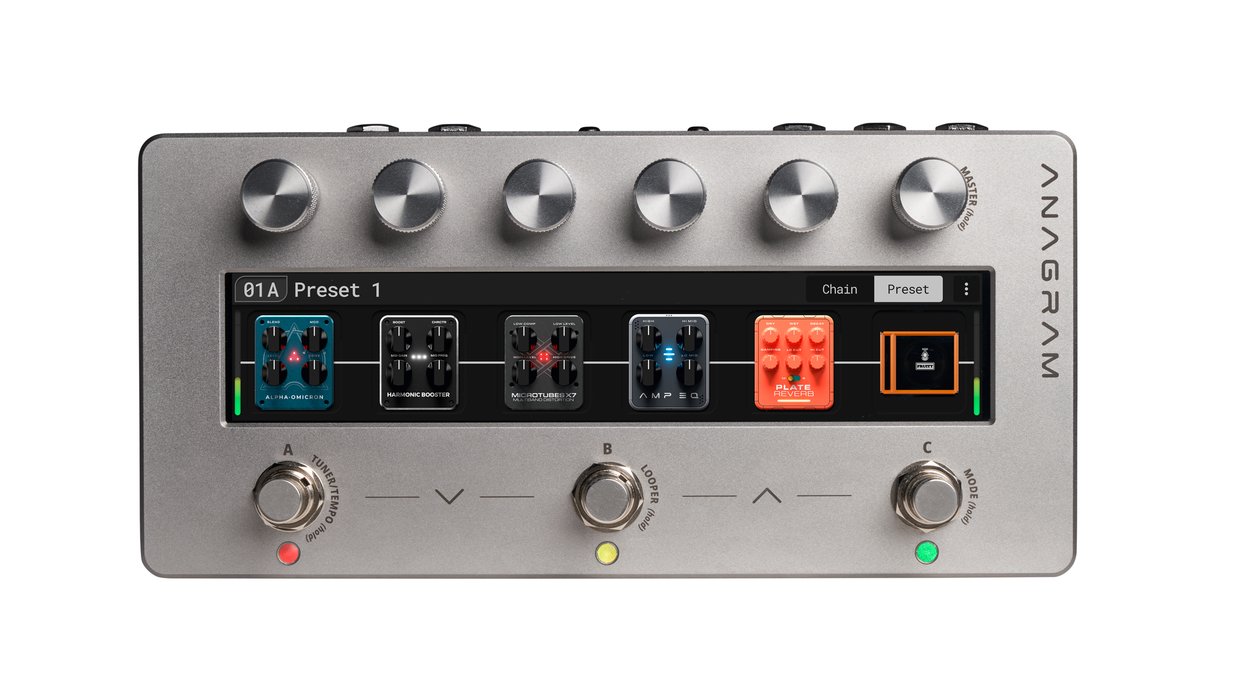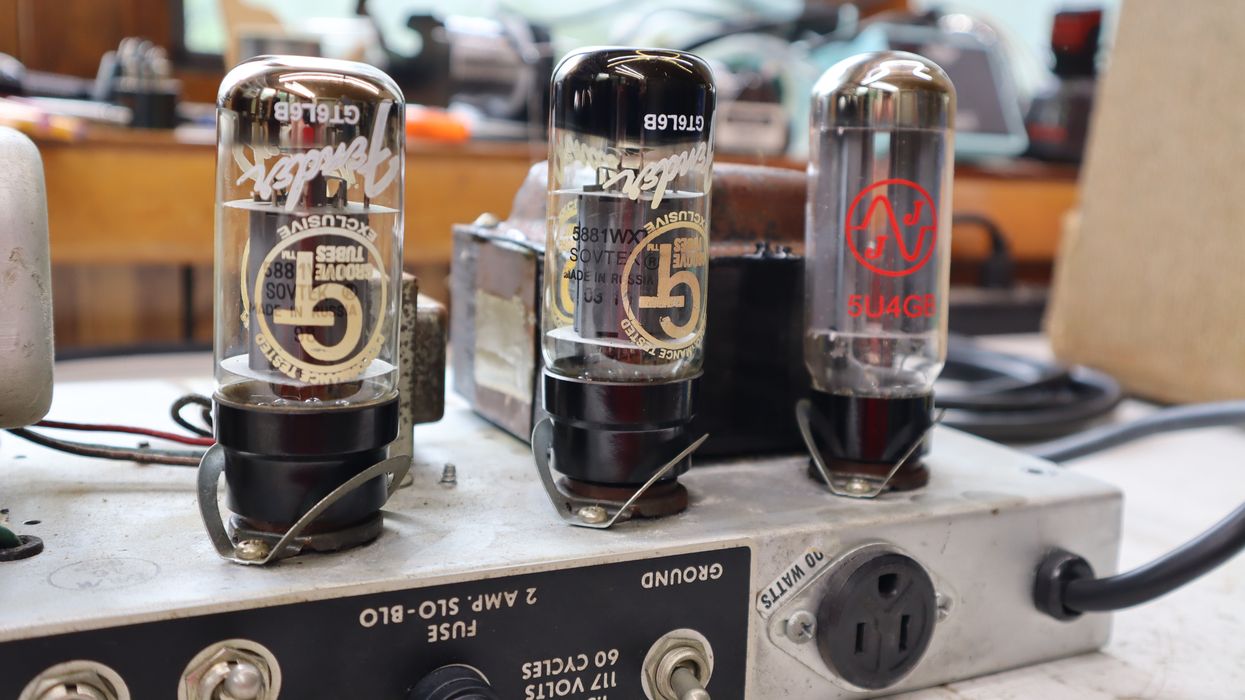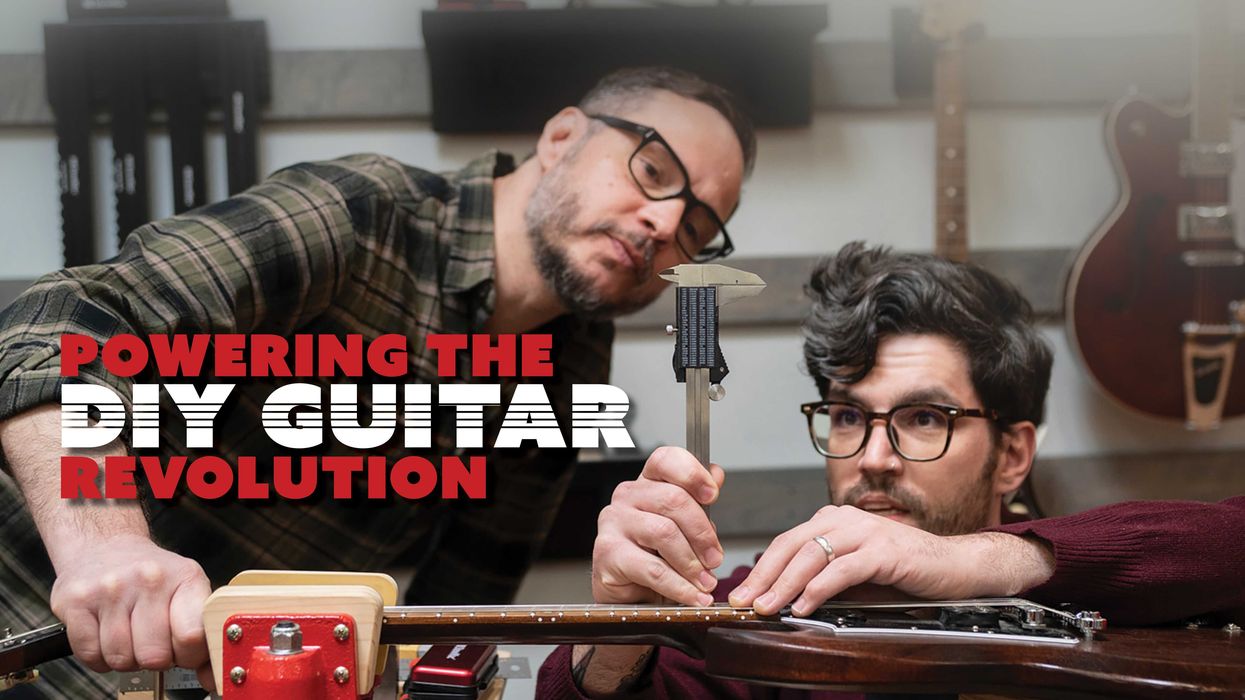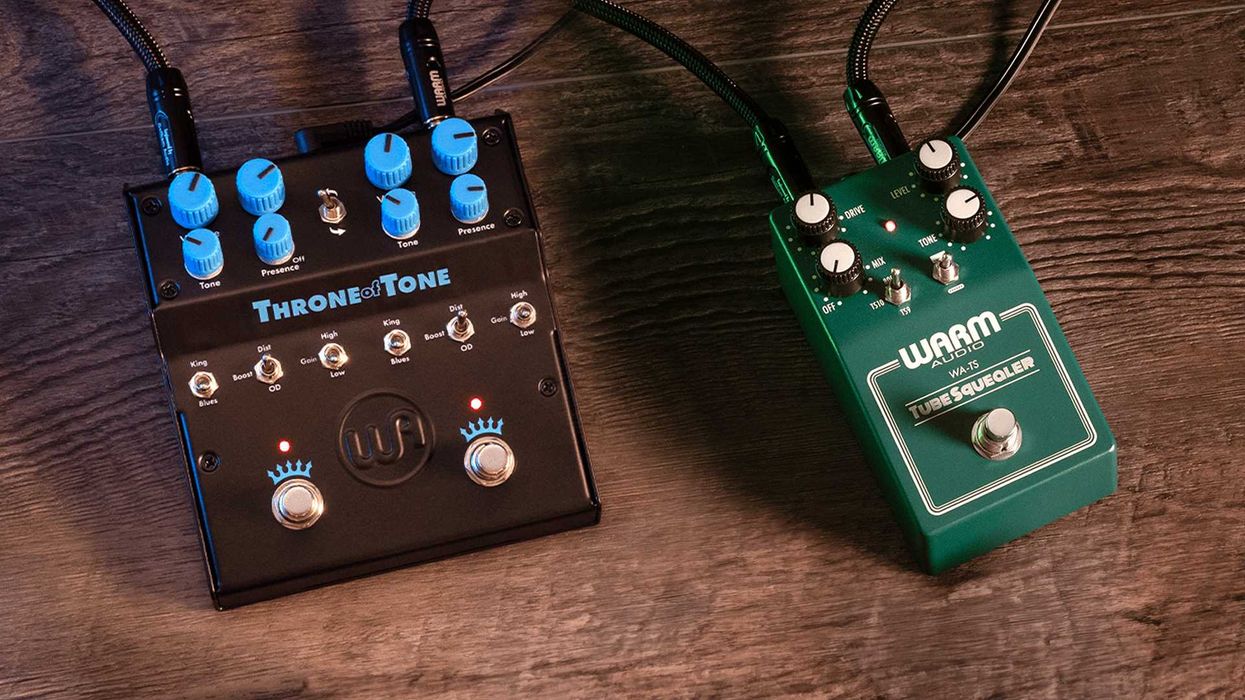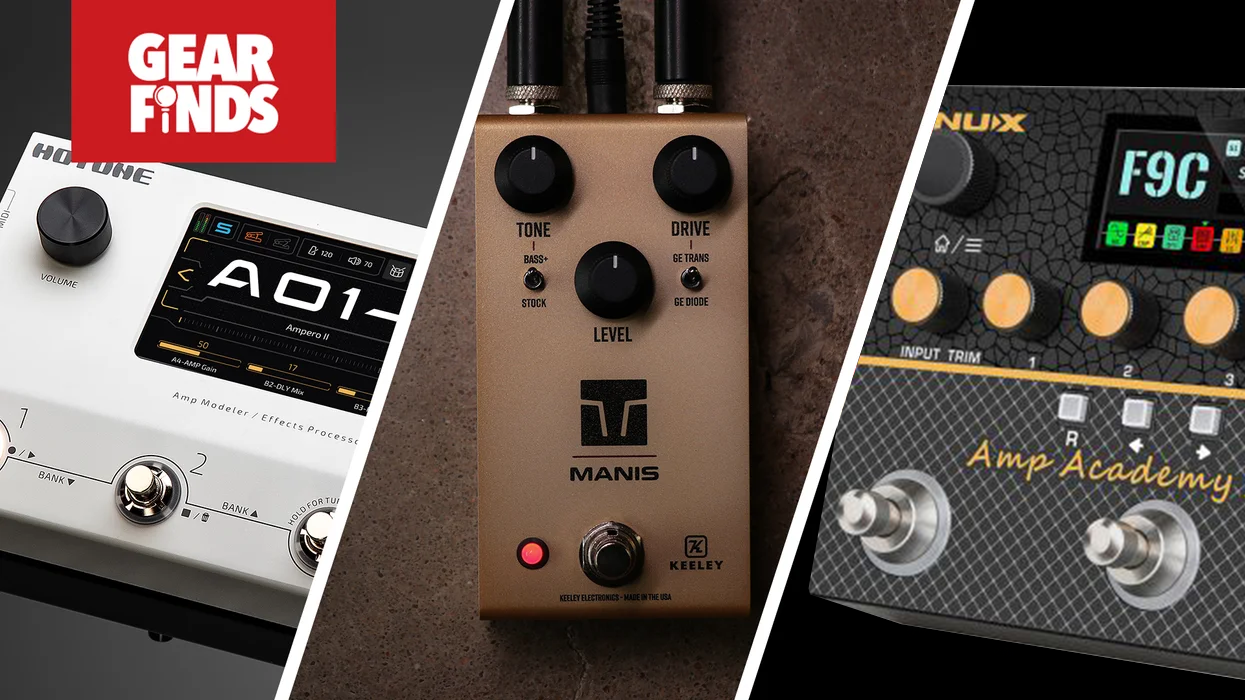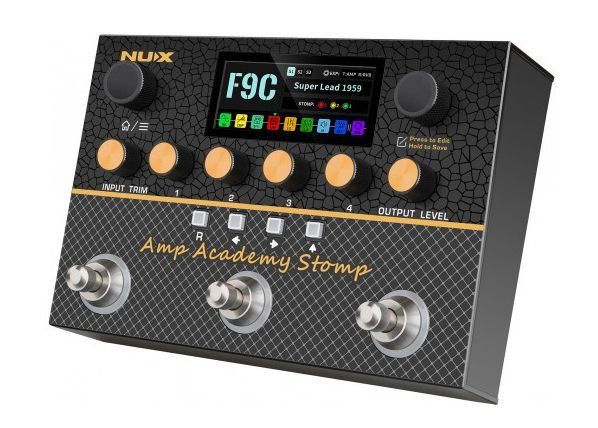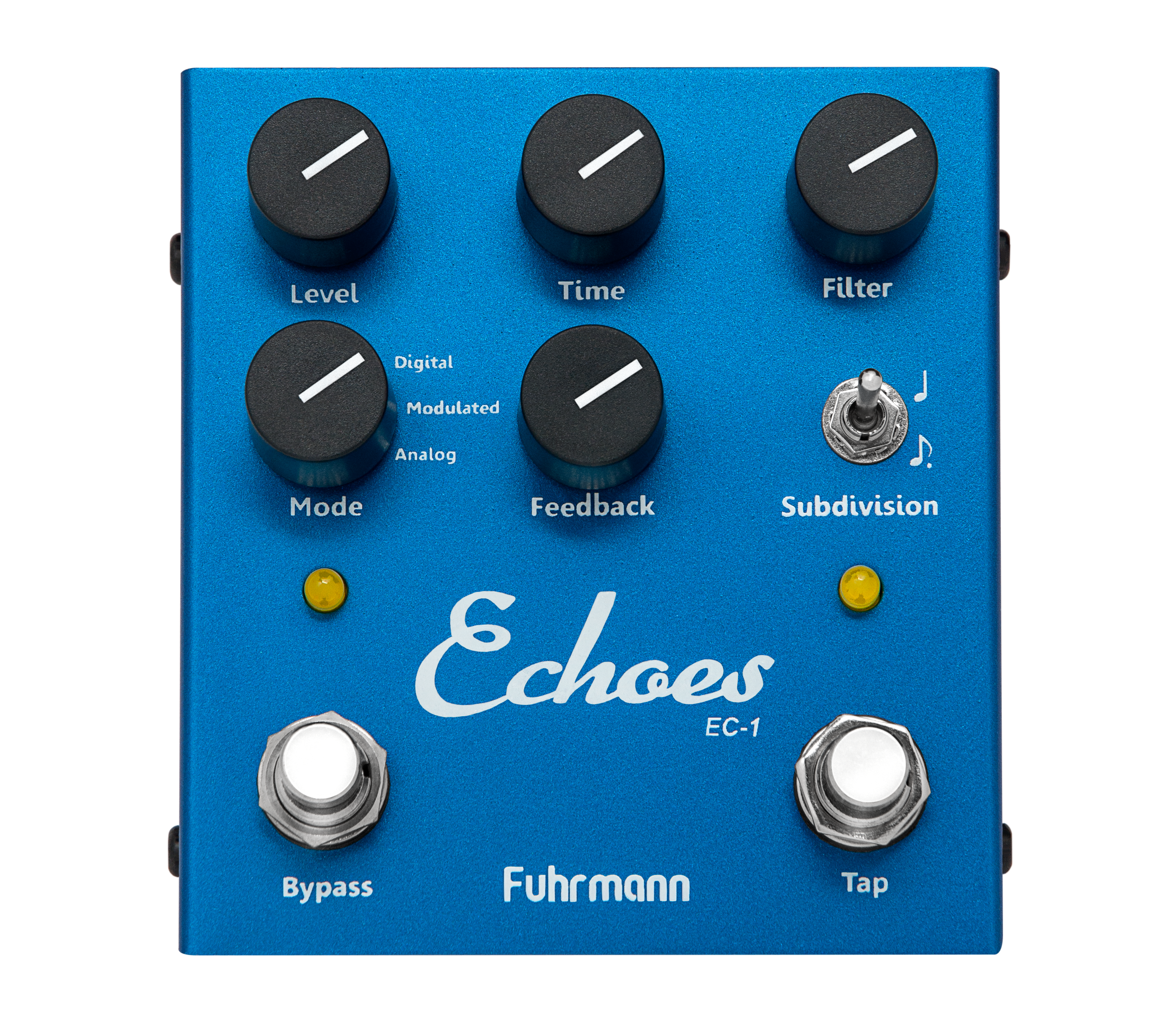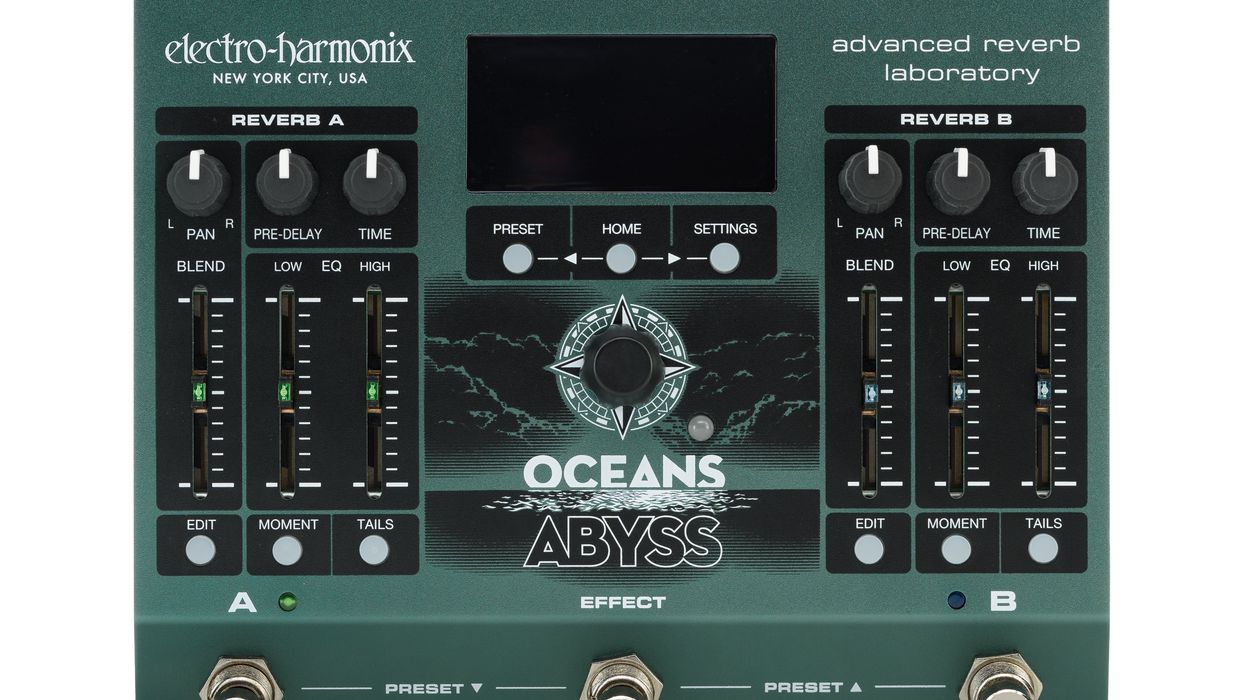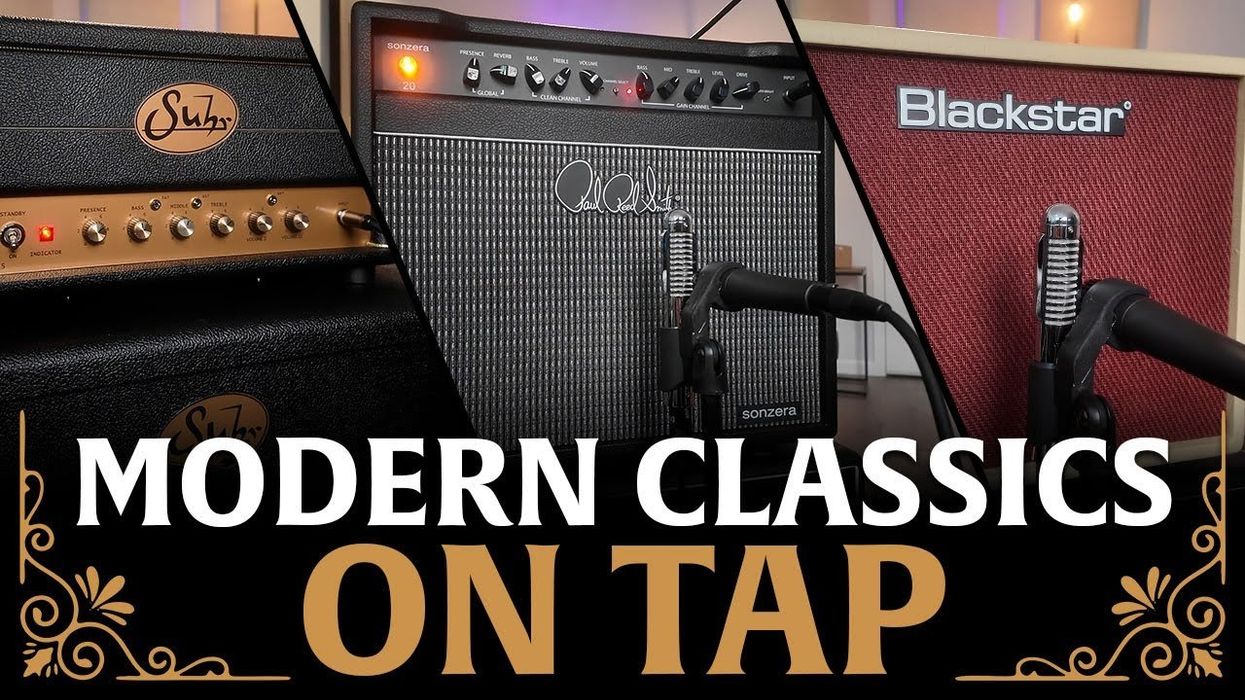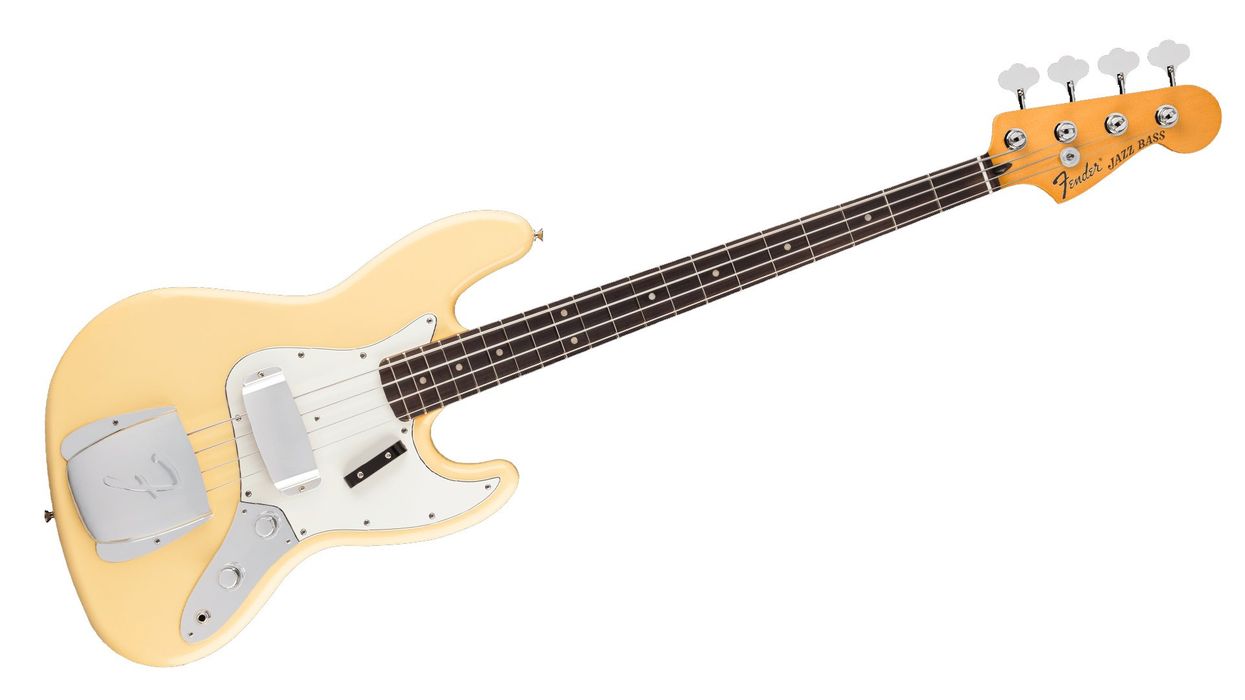Though, in many respects, you could trace its DNA back to the DOD 250 and MXR Distortion+, the Fulltone OCD hit a sweet spot and felt pretty fresh to a lot of players when it was new. It had the edginess and attitude of those hard-clipping drive/distortion pioneers. But it could also sound more open and natural than some of its fellow hard-clipping circuits when tuned just right. Warm Audio’s ODD Box V1, which, as any genius can guess, is an OCD clone at almost every turn, shares those attributes at a very nice $119 price, which is extra attractive given its through-hole construction and the attention that went into its execution.
Sensitive, But Comes on Strong
I came to know the Fulltone OCD via the pedalboard of a studio mate, whose rig was geared toward heavy psychedelic sounds. He used it at a relatively low gain setting and situated it downstream from a germanium Fuzz Face. I tended to experiment with the pedal in that context, and I was always impressed with how it felt aggressive but controlled and not too bossy. Pairing it with the Fuzz Face made for a pretty dangerous combination, too. The ODD Box V1 is capable of all these tricks—though it often feels a bit bossier than the OCD that lives in my memory.
If you had to classify the ODD Box V1’s essence, “Marshall-y” would be a good place to start. It feels immediate, explosive at times, and brimming with scalding top end if you want it. That tendency toward toppiness can make the ODD Box V1 a tricky fit with some amps. Even at low gain and conservative tone settings, the ODD was a poor fit for a black-panel Vibrolux with a lively treble signature. But a squishier black-panel Tremolux coaxed a thicker, richer tone picture, and a darker silver-panel Bassman (which, to my ears, sounds and behaves much like a mid-scooped Marshall plexi) felt like a near ideal fit.In these more optimal pairings, the ODD Box V1 can shine, particularly in low-to-mid-gain settings. It can coax the midrange hiding in the corners of darker amps, making chords sound thick and vividly detailed. It also lends size to lead tones without sounding fuzzy or obscuring an instrument’s voice. Bridge PAFs growl beautifully in this low-gain zone, and Stratocaster neck pickups take on a tasty edge and satisfying mass. At higher gain settings, the ODD Box V1 fast veers toward tones that, to my surprise, seemed like a good match for thrash and British metal. It’s surprisingly aggressive, and if you’re not careful, treble tones can get a bit sizzly. I had to work the tone controls on my guitar, my amps, and the pedal pretty actively to get it in the right pocket. It’s easy to hear how lightning-fast leads would benefit from these pronounced treble tones. But if you like a more forgiving, compressed touch at these high gain levels, the ODD might feel a bit hot.
“It can coax the midrange hiding in the corners of darker amps, making chords sound thick and vividly detailed.”
Though the ODD has a strong personality, its touch sensitivity and responsiveness to varied guitar volume and tone input extends its flexibility and marks another difference between it and pedals with a similar voice, like the Boss SD-1 (which often sounds like a boxier, less complex cousin to the ODD Box V1). It’s pretty easy to summon full-sounding, near-clean tones with a little less guitar volume, and much of that sizzling top end can be rounded off with a quick flick of an instrument’s tone knob.
The Verdict
I love that Warm Audio chases analog authenticity at fair prices. But considering how many rarities and out-of-reach vintage pieces they’ve cloned, it’s a little curious that they chose to replicate a pedal as ubiquitous as the OCD—even in light of Fulltone’s disappearance. The ODD Box V1’s core tonalities tend toward hot, reactive, and distinctly on the Marshall side of the drive spectrum. If that’s a realm where you like to dwell, it’s an affordable alternative to pricier amp-in-a-box solutions like the ZVEX Box of Rock, and more dynamic, open, and natural sounding than an SD-1 and its cousins. For all its Marshall-ness, though, with the right amp—usually one on the darker side—you can summon some of the personality of an angry Fender tweed or an old Supro running hot and wide open. It looks and feels like it’s built for the long haul, inside and out. And if you’re a fan of spot-on aesthetic accuracy, Warm Audio nailed just about every facet of the OCD’s look and feel. For players whose style aligns with its bold personality, it’s a great value.




